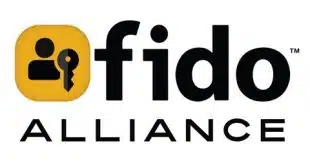American Express Co. on Monday launched Serve, a multifaceted online and offline payment system centered on a digital account and reloadable prepaid card that facilitate person-to-person payments as well as physical, online, and mobile purchases. AmEx says a key advantage of the digital account is that it is funding-agnostic, meaning it can receive funds from any credit or debit card as well as through the automated clearing house.
Built on the Revolution Money platform that AmEx bought early last year, Serve puts AmEx squarely into the electronic-payments fracas as new technology breaks down old industry barriers. “That blurring between online and offline is something that is going to continue and pick up speed,” Dan Schulman, AmEx’s group president, Enterprise Growth, said at a Monday morning call with analysts. “We fully intend to be a market leader in this emerging digital space.”
Asked by an analyst about how Serve will differentiate itself from new offerings by Visa, MasterCard, PayPal, and Google, Schulman wouldn’t talk about competitors’ specific initiatives. But he noted that, “There have been announcements, but there really is nothing right now, right? So there [are] announcements about what they will do at some future date, or what they think they might do at some future date. This is something that is live and here today.”
AmEx expects Serve to generate incremental transaction volume by attracting users who now mainly use cash or debit cards and avoid credit and charge cards, the latter two being AmEx’s core products. But Schulman said existing AmEx customers would find value in Serve. “I think it addresses a wide swath of demographics,” he said.
Consumers can set up a Serve account through the Serve.com Web site or applications for Apple Inc.’s iPhone or smart phones running Google Inc.’s Android operating system. An app for Research in Motion Ltd.’s BlackBerry smart phone is in the works. A so-called master account can hold up to four sub-accounts for family members, friends, or employees. A parent, for example, could create a sub-account for a child away at college and put spending or other controls on it. AmEx itself puts transaction controls on Serve accounts, though Schulman did not provide details on how they are set.
Funding options include ACH debits from checking or savings or payments from AmEx and other networks’ credit and debit cards, or even cash. Asked by an analyst if AmEx might encounter resistance from competing networks, Schulman replied that, “We don’t expect issues coming out of there.”
To make a purchase at a store that accepts AmEx, the cardholder merely needs to present the prepaid card. Merchants don’t need to make any changes to their payment systems. To make an online or mobile purchase, the user types in the Serve account number or prepaid card number. AmEx is working on adding “one-click” functionality later this year, Schulman said. Recipients of person-to-person payments must have a Serve account to receive funds; AmEx gives recipients a week to open an account. If not, AmEx returns the funds to the sender.
AmEx is waiving Serve’s consumer fees for the first six months to attract users. Normal account loading costs are 2.9% of the amount plus 30 cents, but discounted to 0% for cash, debit card, and ACH funding. ATM cash withdrawals cost $2.00 after the first withdrawal. Regarding the discount rate AmEx merchants will pay to accept a Serve prepaid card or account, Schulman said, “generally, it’s lower” than rates for AmEx’s existing cards, but he wouldn’t give specifics.
George Peabody, director of emerging technologies at Maynard, Mass.-based Mercator Advisory Group Inc., says he downloaded Serve’s app on Monday and registered, and everything went smoothly. If Serve has any weakness at the outset, he says, it may be in marketing.
“They’re clearly after the PayPal model,” says Peabody in reference to the P2P and online payments leader. “But I really didn’t hear a commitment to brand-level awareness. They’ve got all the elements; to make it successful they’ve got to drive it, too.”
Serve, which its testing its system in Eugene, Ore., is relying on partner companies for much of its early marketing lift. The first three are Ticketmaster LLC, Concur Technologies Inc., a provider of online expense-management services for businesses, and Flipswap Inc., which facilitates trade-ins of used cell phones. Ticketmaster will offer Serve as a platform for customers to make and collect payments toward ticket purchases from other customers.
In another twist, Serve is trying to make its system attractive for charitable donations by offering software apps called widgets that can be downloaded on its site or on Facebook and then shared to encourage donations. AmEx will match donations up to $100,000 for each of its five initial partners: Autism Speaks, Best Friends Animal Society, Malaria No More, Save The Children, and Stand Up For Kids. AmEx also is developing widgets so that consumers can sell personal items or raise funds for their favorite charities by dragging the widgets into the social-network or online-community sites of their choice, such as their circle of Facebook friends. “In effect what this allows is that consumers can easily become sellers within their own particular communities,” he said.
Schulman said another component of Serve’s marketing plan calls for use of “viral” marketing, a term generally applied to social-network advertising. Serve also is taking another cue from PayPal, the first major payments player to open its network to outside software developers through its PayPal X system. Serve has open-system functionality that Schulman says would enable third-party developers to include Serve in their apps.
Serve currently is available only to U.S. consumers, but AmEx plans to take it abroad later this year.




